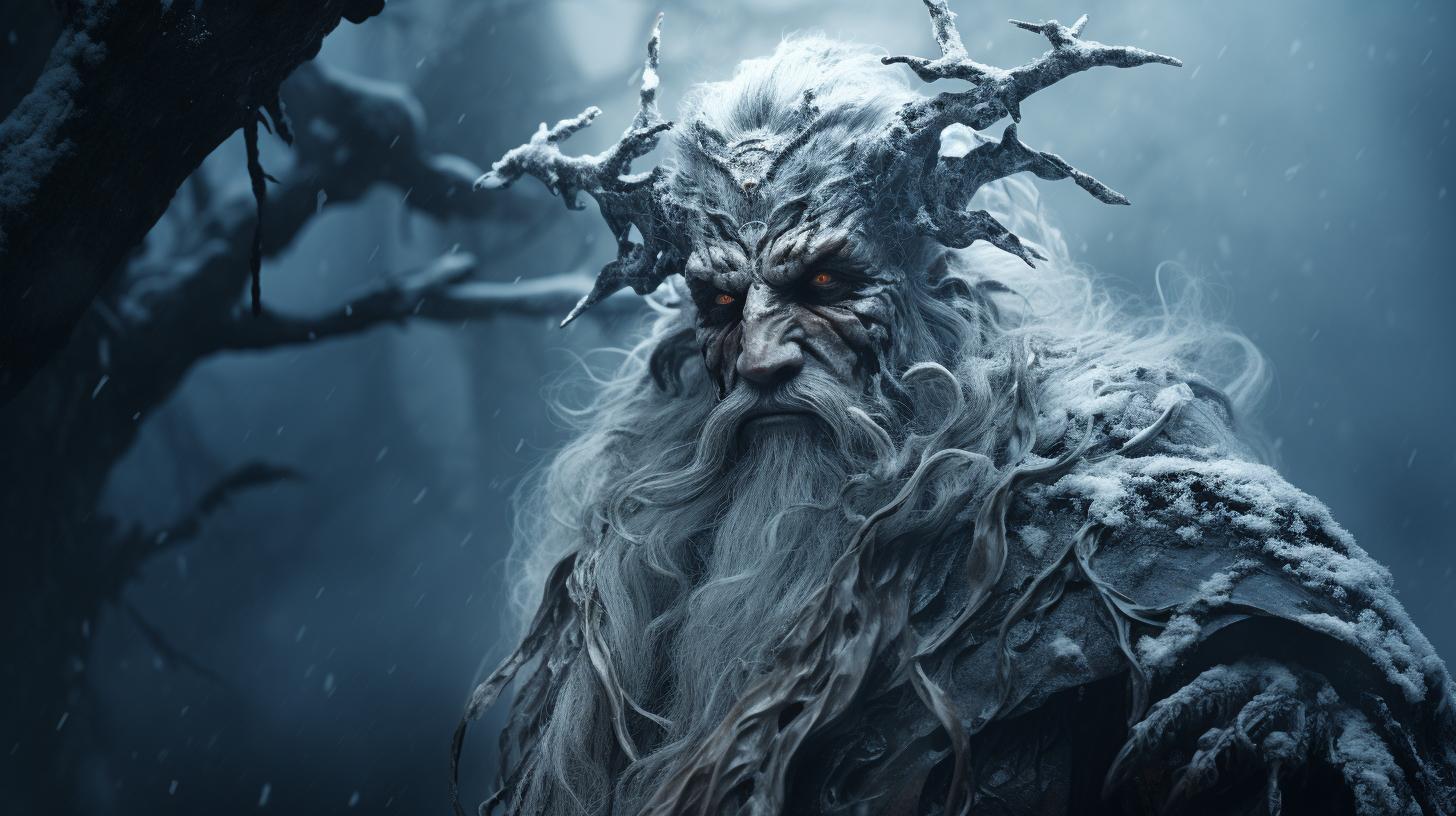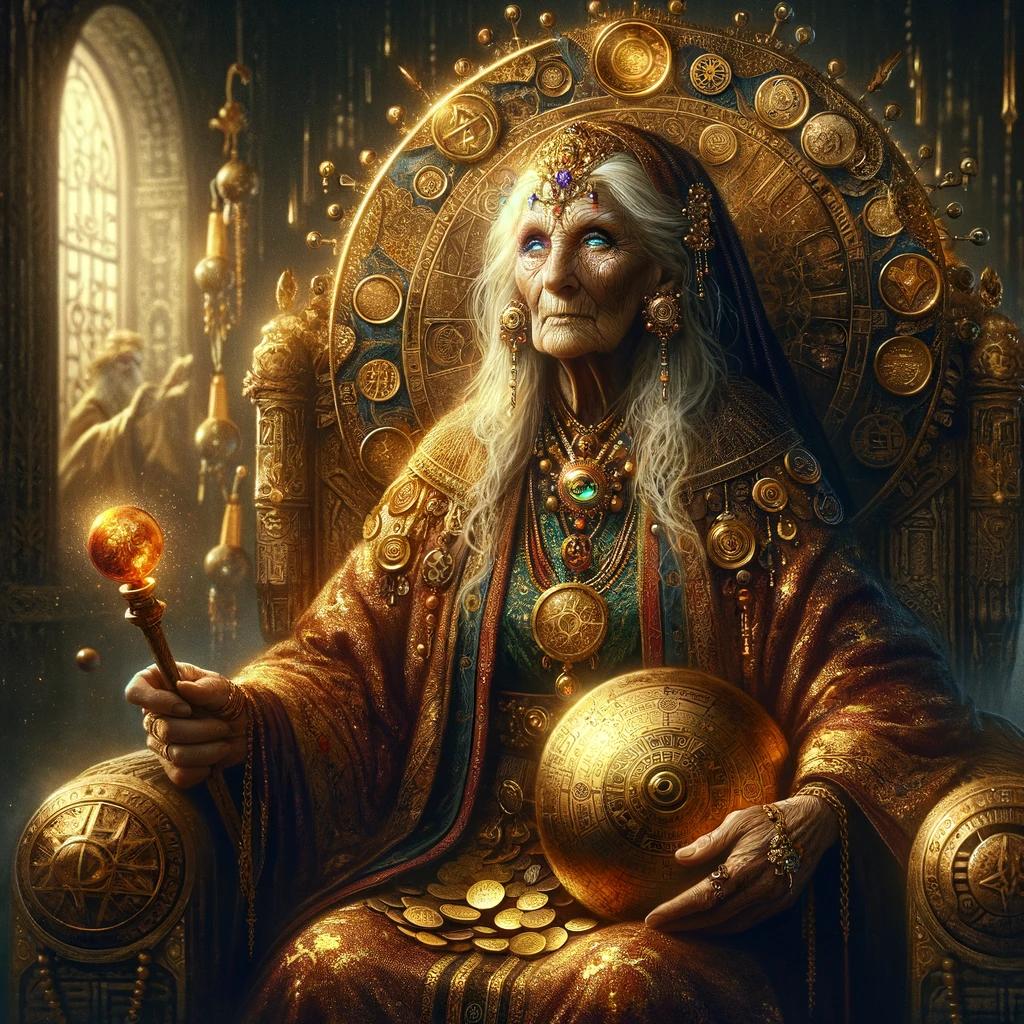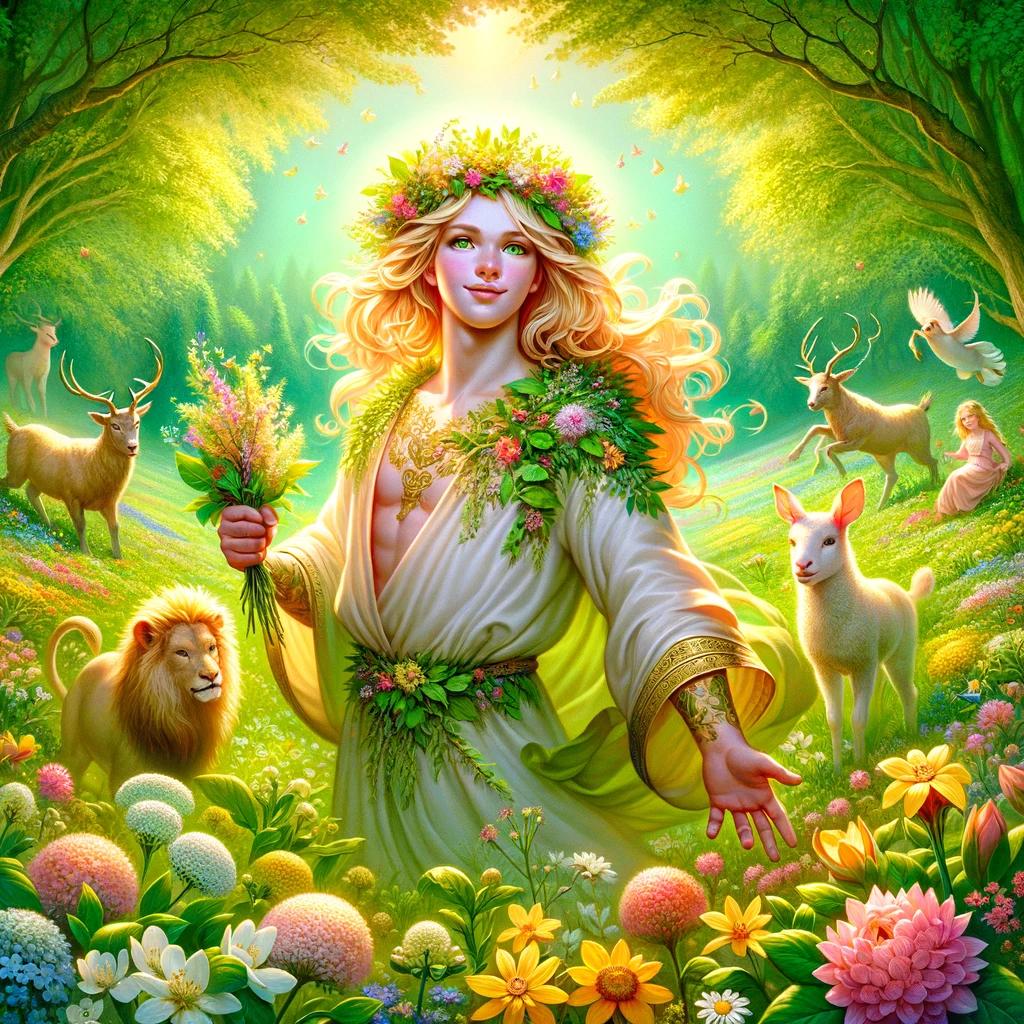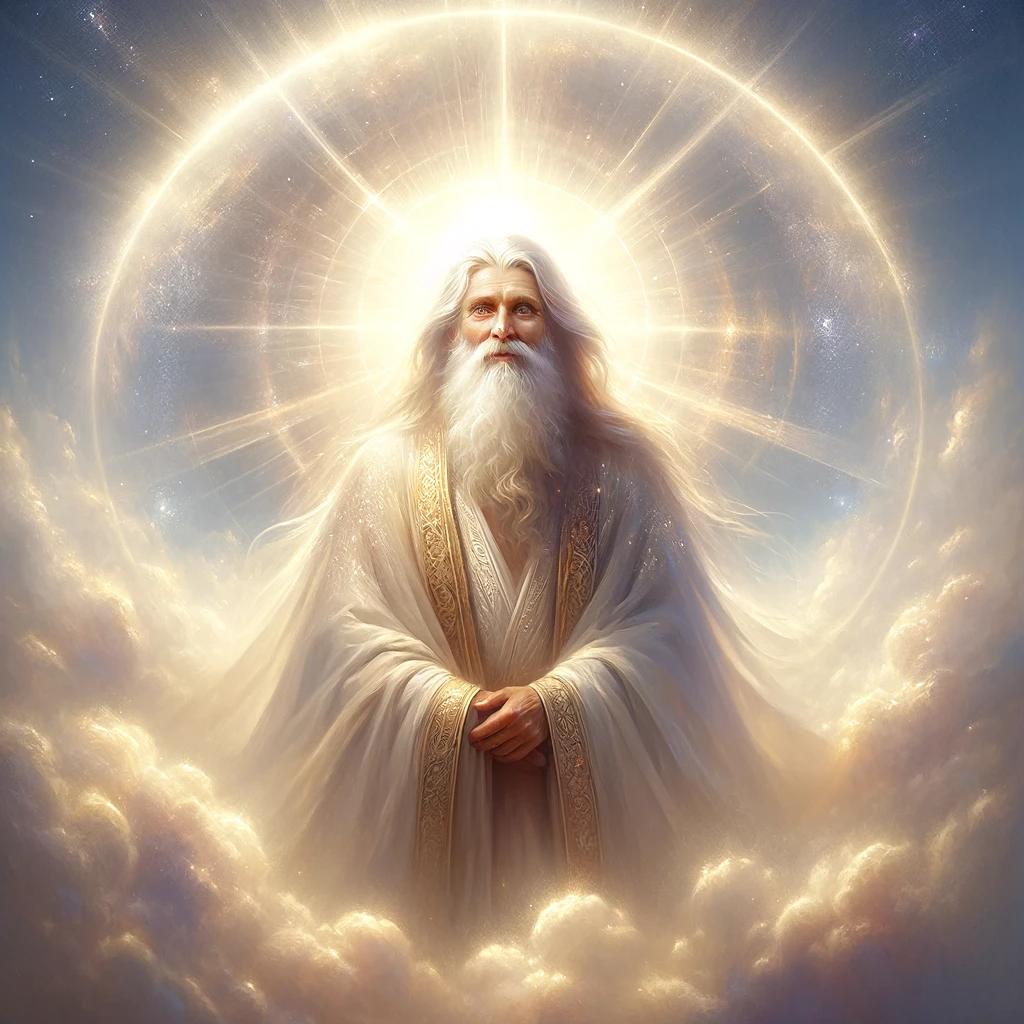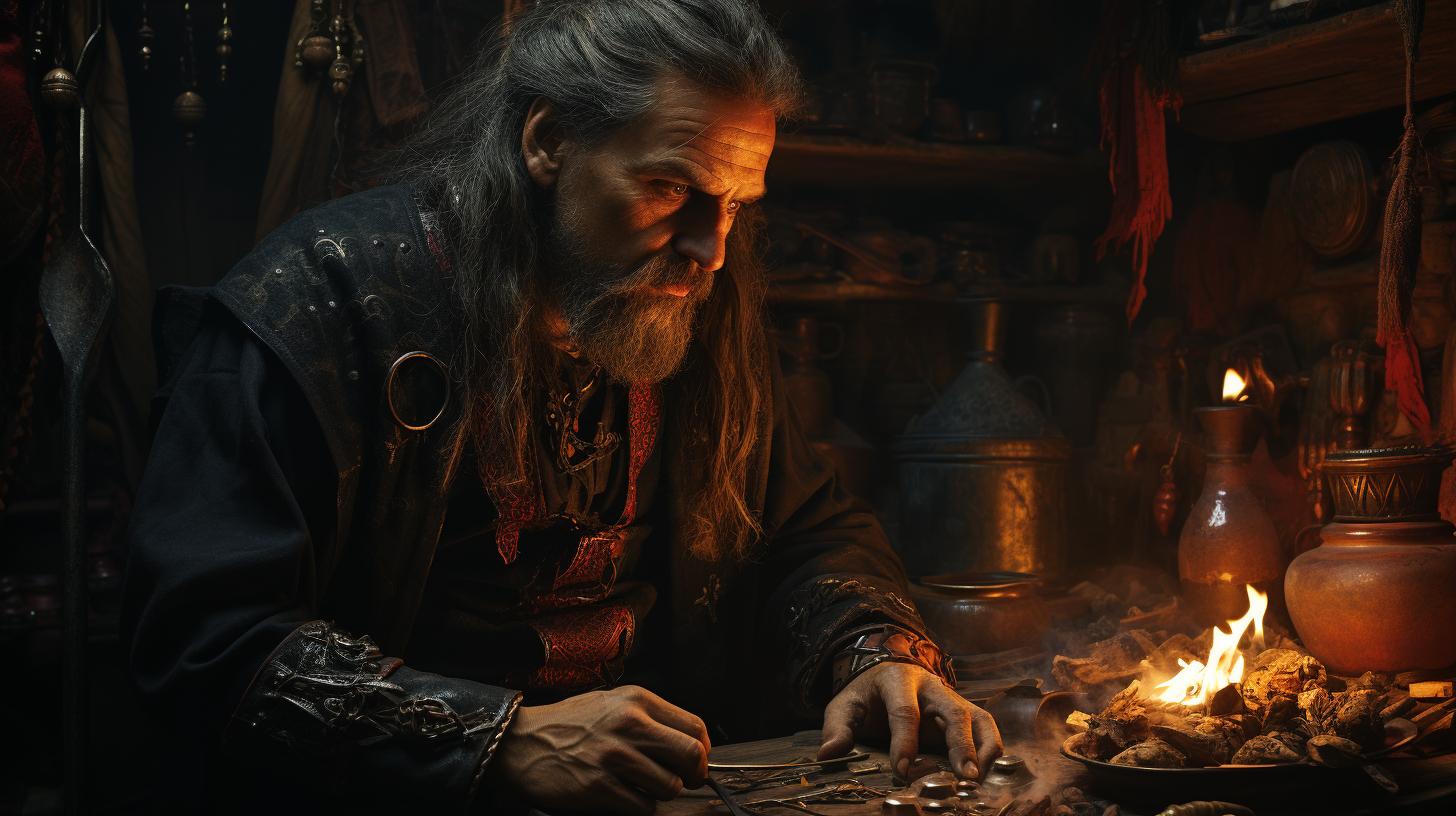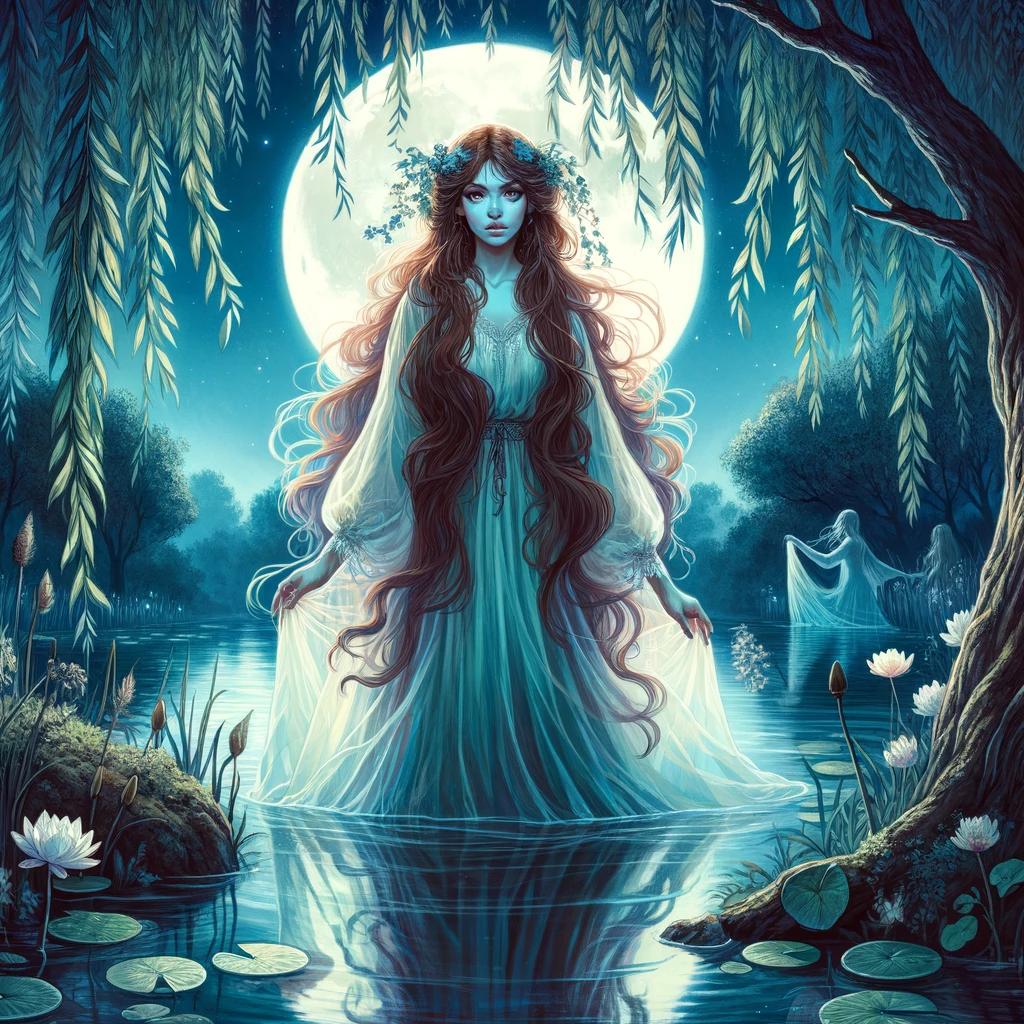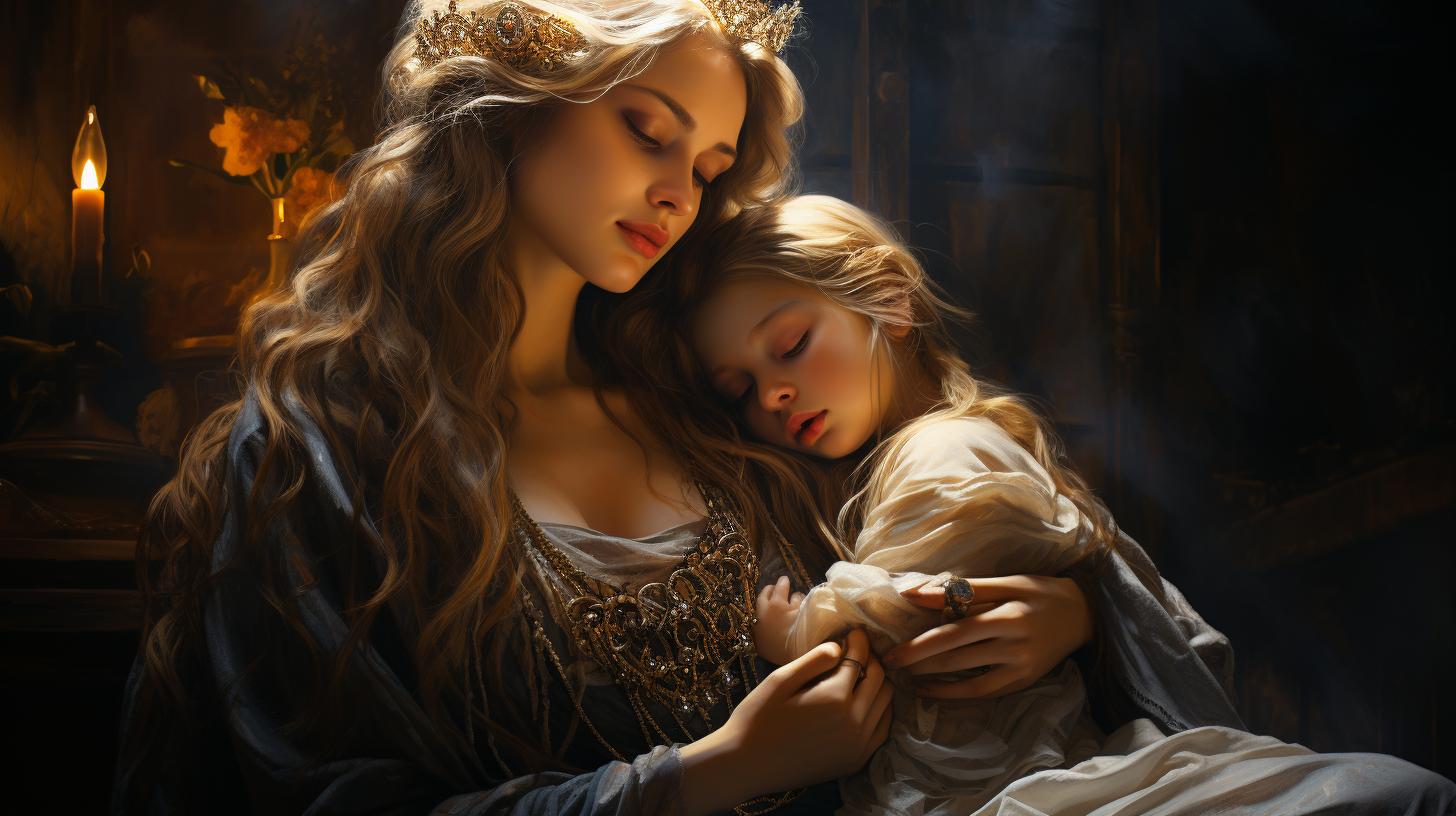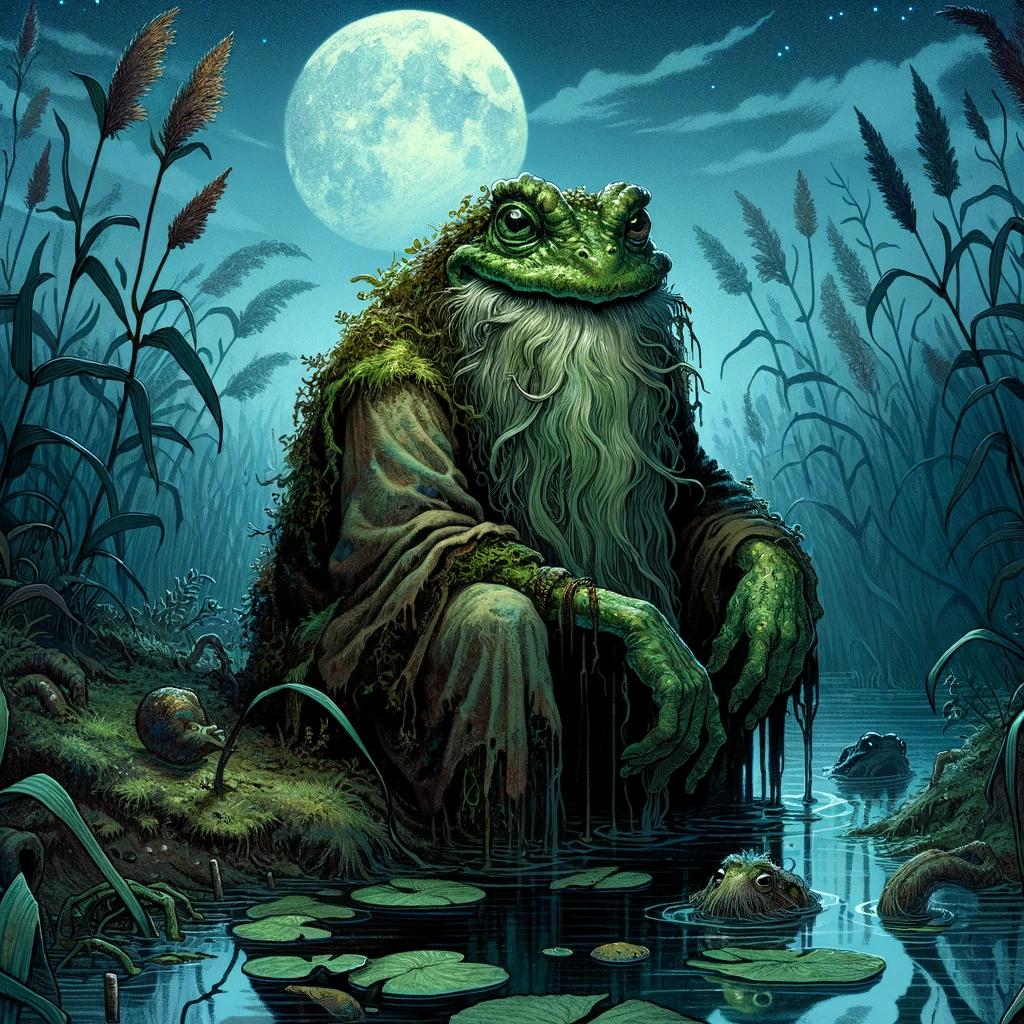Who is Father Frost: The Russian Equivalent of Santa Claus

Father Frost, also known as Ded Moroz, is a legendary figure in Russian folklore and the equivalent of Santa Claus. He is depicted as an elderly man with a long beard, dressed in a long tunic of blue and white colors.
Accompanied by his granddaughter, the Snow Maiden, Father Frost rides a sleigh pulled by three steel horses. Banned during the Soviet era, Father Frost was reintroduced by Stalin as a symbol of the regime’s popularity.
Today, he remains a cherished gift-giver and a symbol of Russian culture, with a rivalry existing between him and Santa Claus.
The Origins of Father Frost
Exploring the origins of Father Frost provides insights into the rich mythology and folklore that shaped this beloved Russian character. Spanning centuries, Father Frost has emerged from a tapestry of Russian fairy tales, legends, and cultural evolution.
Mythology and Folklore
Within Russian mythology, Father Frost finds his roots in the ancient tales that depict a winter deity associated with frost and snow. This concept was intertwined with the idea of a gift-giver who brings abundance and blessings during the winter season.
The folklore surrounding Father Frost often involves encounters with humans, both rewarding kindness and punishing greed.
Russian Fairy Tales and Legends
Russian fairy tales further embellish the persona of Father Frost, depicting him as a wise and mysterious being with magical powers. These tales showcase his ability to grant wishes, predict the future, and confer blessings upon those he deems worthy.
The Snow Maiden (Snegurochka), as his companion, adds a touch of enchantment to the stories.
Evolution of the Father Frost Character
Over time, the character of Father Frost has evolved, influenced by social, cultural, and political factors. His appearance, personality, and role in society have undergone changes, reflecting the shifting beliefs and ideologies throughout Russia’s history.
From his early connections with ancient Slavic traditions to his adaptation in modern times, Father Frost’s evolution is a testament to his enduring significance.
Father Frost and Ded Moroz: Exploring the Connection
When delving into the origins and significance of Father Frost, it becomes essential to explore the connection between Father Frost and Ded Moroz, the Russian equivalent.
Let us take a closer look at Ded Moroz, the comparisons with Santa Claus, and the significance of Ded Moroz in Russian culture.
Ded Moroz: The Russian Equivalent of Father Frost
Ded Moroz, also known as the ‘Abuelo Escarcha’ or the ‘Grandfather Frost,’ is a legendary figure deeply rooted in Russian mythology and folklore.
He personifies the spirit of winter and is celebrated as a gift-giver during the frosty season. Often depicted as an elderly man with a long beard, wearing a flowing tunic in blue and white colors, Ded Moroz holds a position of honor in Russian culture.
Comparisons with Santa Claus
While Ded Moroz shares similarities with the beloved figure of Santa Claus, there are distinct differences between them. Unlike Santa Claus, Ded Moroz is accompanied by his granddaughter, Snegurochka, the Snow Maiden, adding a touch of enchantment to their journey of gift-giving.
Additionally, Ded Moroz’s sleigh is pulled by three steel horses, deviating from the traditional reindeer of Santa Claus.
Significance of Ded Moroz in Russian Culture
Ded Moroz holds immense significance in Russian culture, serving as a symbol of winter festivities and celebrations. He is deeply ingrained in the hearts of the Russian people, representing the magic and joy of the holiday season.
Ded Moroz’s presence during the New Year’s celebrations is particularly prominent and continues to be cherished as a beloved tradition.
The Symbolism and Appearance of Father Frost
Father Frost, also known as Ded Moroz, is not only a popular figure in Russian folklore, but also carries significant symbolism in his appearance. Let’s explore the various elements that make up the symbolism and appearance of Father Frost.
The White Beard and Blue-and-White Attire
One of the most recognizable features of Father Frost is his long white beard, which symbolizes wisdom and age. The beard represents his role as an elder figure guiding and bringing joy to children and families during the winter celebrations.
Additionally, Father Frost is often depicted wearing a flowing tunic in shades of blue and white. The blue color represents the cold winter season, while the white represents purity and the snow-covered landscapes.
This attire reinforces the association of Father Frost with the winter festival and reflects the cultural significance of the snowy Russian winters.
The Role of Snow Maiden (Snegurochka)
Another important element of Father Frost’s symbolism is the presence of his granddaughter, the Snow Maiden or Snegurochka. She is often portrayed as a beautiful young girl with long, flowing hair dressed in a blue or white gown.
The Snow Maiden represents the fleeting beauty and magic of winter. She brings joy and companionship to Father Frost, emphasizing the importance of family bonds and the joy of shared celebrations during the winter season.
Together, they embody the spirit of winter festivities and the joy of giving and receiving gifts.
Father Frost’s Sleigh and Magical Abilities
Father Frost is typically depicted traveling in a sleigh pulled by three steel horses, symbolizing power and strength. This mode of transportation adds to the mythical and magical aspect of Father Frost’s character.
It is believed that he possesses magical abilities, allowing him to deliver presents and bring happiness to children across Russia. His sleigh represents his ability to traverse vast distances and bring joy to all corners of the country.
These magical elements contribute to the enchanting aura surrounding Father Frost and the anticipation of his arrival during the winter celebrations.
Father Frost in Soviet Russia
The period of Soviet Russia brought significant changes to the celebration of Father Frost, known as Ded Moroz, due to the political and cultural environment of the time.
The Ban on Religion and Festivities
During the establishment of the Soviet Union in 1922, the communist regime implemented a ban on religion, including the celebration of Christmas, which was traditionally observed on January 7th in Russia.
Ded Moroz, as a symbol associated with religious festivities, was considered an ally of the clergy and wealthy landowners, both of whom were perceived as threats to communist power. Violating these rules posed the risk of arrest and persecution.
Stalin’s Reintroduction of Ded Moroz
In an unexpected turn of events, Soviet dictator Joseph Stalin decided to reintroduce Ded Moroz in 1935 as part of his efforts to gain popularity and stabilize the country. However, the celebrations were allowed only on New Year’s Eve to avoid any religious connotations.
The traditional Christmas trees were reinstated under the new name of “New Year trees.” This reintroduction of Ded Moroz was part of a state propaganda machinery aimed at presenting the Soviet Union as superior to the Western capitalist system.
Political Propaganda and Ded Moroz
Ded Moroz not only became a gift-giver but also a tool for promoting communist ideals. During the years of the Cold War, Ded Moroz’s image was frequently used in posters and propaganda materials to highlight the achievements of the Soviet Union, particularly in the space race.
The United States even portrayed Ded Moroz to emphasize the alleged dangers of abandoning religious practices.
Overall, Ded Moroz’s role during Soviet Russia evolved from being banned to being reintroduced as a symbol for political propaganda.
The celebrations associated with Ded Moroz were transformed to align with the ideology of the communist regime.
Father Frost Today: Popularity and Rivalry
Father Frost vs. Santa Claus: The Rivalry
The rivalry between Father Frost and Santa Claus is a notable phenomenon in the world of holiday traditions. While many countries embrace Santa Claus as the iconic figure for gift-giving during Christmas, in Russia, Father Frost holds a special place in the hearts of the people.
This rivalry stems from a sense of cultural pride and identity, with some politicians promoting Father Frost as the authentic symbol of Russian spirit, considering Santa Claus as an “impostor.”
Ded Moroz’s Resurgence in Modern Russia
In the modern era, Ded Moroz has experienced a significant resurgence in popularity in Russia.
As the main gift-giver during the New Year’s celebration, Ded Moroz has become an integral part of Russian culture. He is cherished by both children and adults, representing the magic and joy of the winter season.
The tradition of Ded Moroz has been passed down through generations, regaining prominence after the fall of the Soviet Union.
Ded Moroz’s Presence in International Context
Although originating from Slavic mythology, Ded Moroz’s fame has transcended borders and garnered attention beyond Russian territories. His influence can be seen in various Slavic and Eastern European countries, where similar figures like Joulupukki and San Nicolás bear resemblance to Father Frost.
Ded Moroz’s presence in international contexts highlights the enduring appeal and widespread recognition of this iconic figure.
Father Frost vs. Santa Claus: The Rivalry
The rivalry between Father Frost and Santa Claus is a notable phenomenon in the world of holiday traditions. While many countries embrace Santa Claus as the iconic figure for gift-giving during Christmas, in Russia, Father Frost holds a special place in the hearts of the people.
This rivalry stems from a sense of cultural pride and identity, with some politicians promoting Father Frost as the authentic symbol of Russian spirit, considering Santa Claus as an “impostor.”
Ded Moroz’s Resurgence in Modern Russia
In the modern era, Ded Moroz has experienced a significant resurgence in popularity in Russia.
As the main gift-giver during the New Year’s celebration, Ded Moroz has become an integral part of Russian culture. He is cherished by both children and adults, representing the magic and joy of the winter season.
The tradition of Ded Moroz has been passed down through generations, regaining prominence after the fall of the Soviet Union.
Ded Moroz’s Presence in International Context
Although originating from Slavic mythology, Ded Moroz’s fame has transcended borders and garnered attention beyond Russian territories. His influence can be seen in various Slavic and Eastern European countries, where similar figures like Joulupukki and San Nicolás bear resemblance to Father Frost.
Ded Moroz’s presence in international contexts highlights the enduring appeal and widespread recognition of this iconic figure.
Protecting Father Frost: Cultural Concerns and Controversies
Cultural preservation is a significant concern when it comes to Father Frost, as many Russians strive to protect their traditions and heritage from the influence of Western cultures. With the rise of globalization and the spread of Western customs, there are worries that the authenticity and uniqueness of Ded Moroz may be diluted or lost over time.
Cultural Preservation vs. Western Influence
One of the key debates surrounding Father Frost is the tension between cultural preservation and Western influence. Some argue that embracing Western traditions and figures, such as Santa Claus, threatens the integrity of Russian culture.
They argue that Ded Moroz represents an important part of Russian identity and should be safeguarded against outside influences.
Others, however, believe that cultural exchange and adaptation are inevitable in today’s interconnected world.
They see the coexistence of Ded Moroz and Santa Claus as an opportunity to celebrate diverse cultural symbols and values. These individuals argue that traditions can evolve without losing their essence and that Father Frost can continue to be celebrated alongside other figures.
Legal Actions and Controversies Surrounding Father Frost
The popularity of Father Frost has led to legal disputes and controversies surrounding his portrayal and commercial use. Some individuals and organizations have taken legal actions to protect the character and prevent any misuse or misrepresentation.
These legal battles often involve accusations of cultural appropriation or unauthorized commercialization of Ded Moroz. The aim is to ensure that Father Frost is portrayed respectfully and in alignment with the authentic traditions and values associated with him.
Ded Moroz in Advertising and Commercialization
Father Frost’s image has been increasingly used in advertising and commercial campaigns, raising concerns about the commodification of Russian culture. Some argue that the commercialization of Ded Moroz detracts from the deeper cultural and historical significance of the character.
However, others see the commercial representation of Ded Moroz as a way to promote Russian traditions and generate interest in Russian folklore. It is a means to keep the character alive and relevant in a consumer-driven society.
Despite the controversies surrounding Ded Moroz’s commercialization, it is crucial to strike a balance between preserving the cultural heritage and embracing the evolving dynamics of modern society.
Father Frost in Popular Culture and Media
Father Frost, also known as Ded Moroz, has made a significant impact on popular culture and media, appearing in various forms of entertainment and creative works.
From literature and fairy tales to films, television shows, and even songs, Ded Moroz has become an iconic figure in Russian and Slavic culture.
Father Frost in Literature and Fairy Tales
Throughout history, Father Frost has been featured in numerous Russian and Slavic folktales and fairy tales.
These stories often depict him as a wise and magical character who brings gifts to the deserving and punishes the wicked. Notable tales featuring Father Frost include “Morozko” and “The Snow Maiden,” which explore his role as a mystical figure in the wintertime.
Father Frost in Films and Television
Ded Moroz has also made appearances in various films and television shows, captivating audiences with his enchanting presence. Russian cinema has produced numerous adaptations of folklore and fairy tales that showcase Father Frost as a central character.
Additionally, Ded Moroz has been featured in animated films and television series targeting both children and adults, further enhancing his cultural significance.
Songs and Music Celebrating Ded Moroz
The image of Father Frost has inspired countless songs and musical compositions in Russian and Slavic cultures. These songs often celebrate the spirit of Ded Moroz, bringing joy and excitement to the winter season.
From traditional folk songs to modern pop and rock tunes, the music dedicated to Father Frost reflects his enduring popularity and the festive atmosphere surrounding his presence.
- Russian and Slavic fairy tales and folklore feature Father Frost as a central character
- Ded Moroz has appeared in various films and television shows, captivating audiences
- A wide range of songs and musical compositions celebrate the spirit of Father Frost
Father Frost Around the World
Explore the global presence of Father Frost, also known as Ded Moroz, and the various cultural connections and unique variations that exist:
Ded Moroz and Joulupukki: Cross-Cultural Connections
Discover the intriguing similarities and connections between Ded Moroz and Joulupukki, the Finnish version of Santa Claus.
Explore their shared characteristics, such as their gift-giving role and wintertime symbolism, highlighting the cross-cultural influences and exchanges between Russia and Finland.
Father Frost in Slavic and Eastern European Countries
Learn about the widespread presence of Father Frost in Slavic and Eastern European countries beyond Russia. Uncover how different cultures have adapted and embraced their own versions of Father Frost, adding their unique traditions and folklore to the character.
Discover how these regional variations further contribute to the richness of the Father Frost mythos.
Unique Variations of Father Frost in Different Cultures
Delve into the diverse interpretations and variations of Father Frost found in different cultures around the world. From the Czech Republic’s “Ježíšek” to Belarus’ “Dzyed Maroz” and Ukraine’s “Sviatyy Mykolai,” explore how different countries have developed their own distinct versions of the beloved gift-giving character, each with their own set of traditions and stories to celebrate.
The Legacy and Significance of Father Frost
Father Frost, also known as Ded Moroz, holds a significant place in Russian culture and traditions. Let’s explore the various aspects that highlight the legacy and importance of this beloved figure.
Symbol of Winter Festivities and Celebrations
Ded Moroz is deeply ingrained in Russian winter festivities and celebrations. As the main gift-giver during the New Year’s holiday, he symbolizes joy, generosity, and the spirit of giving. Families gather around decorated fir trees, known as New Year trees, and eagerly await the arrival of Father Frost and his companion, the Snow Maiden.
During these celebrations, children recite poems and songs to Ded Moroz, hoping to catch his attention and receive gifts. The presence of Father Frost adds a magical and festive atmosphere to winter festivities, creating cherished memories for generations to come.
Cultural Identity and National Pride
Ded Moroz embodies the rich cultural heritage and national pride of the Russian people. The character of Father Frost has deep roots in Slavic mythology and fairy tales, reflecting the traditions and beliefs passed down through generations.
This iconic figure represents the resilience and strength of Russian culture, reminding people of their history, values, and shared experiences. Father Frost’s enduring presence serves as a source of pride for many Russians, fostering a sense of unity and cultural identity.
Father Frost’s Role in Contemporary Society
In modern Russia, Ded Moroz continues to play a significant role in society beyond the realm of winter festivities. His image is often used in advertisements, promotional campaigns, and cultural events, further solidifying his status as a beloved symbol of Russian tradition.
Ded Moroz’s influence can also be observed in various forms of media, including literature, films, and music. His stories and adventures have become an integral part of Russian popular culture, captivating audiences of all ages.
Moreover, Ded Moroz’s reemergence after the fall of the Soviet Union reflects the resilience of Russian traditions and the preservation of cultural heritage. Many individuals and organizations actively strive to protect and promote the legacy of Father Frost, ensuring that future generations can continue to embrace and celebrate this cherished symbol.
In conclusion, Ded Moroz, or Father Frost, holds a deep legacy and significance in Russian culture. As a symbol of winter festivities, a representation of cultural identity, and a beloved figure in contemporary society, Ded Moroz continues to captivate the hearts and imaginations of the Russian people, fostering a sense of pride and unity.
.

